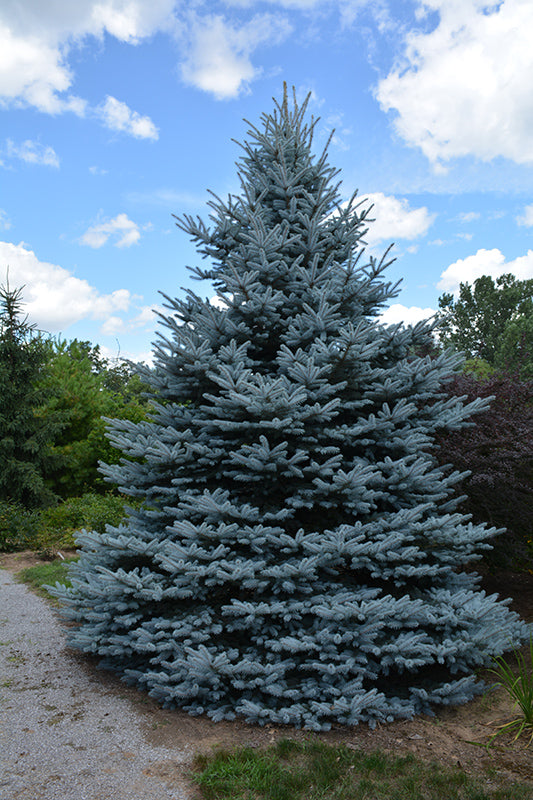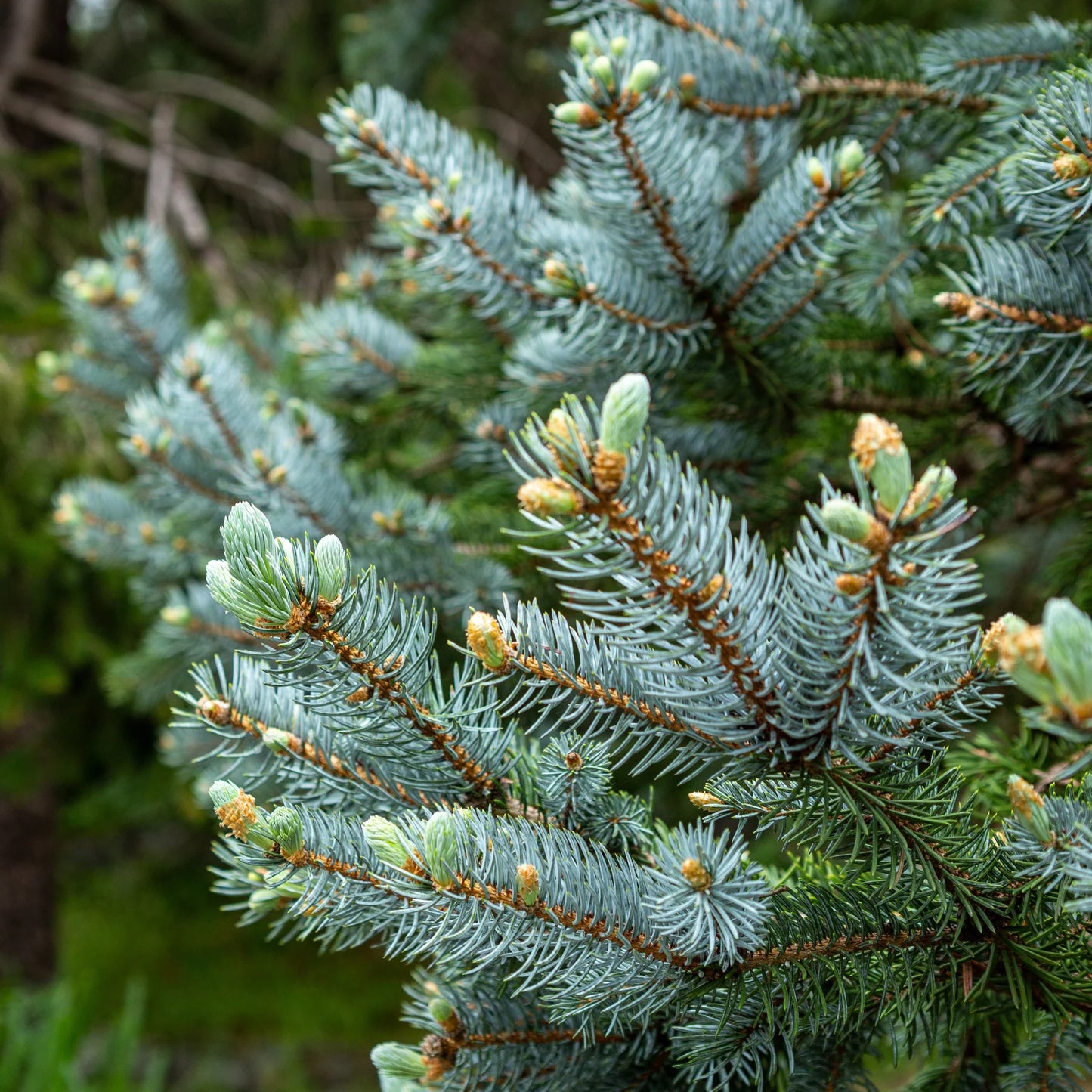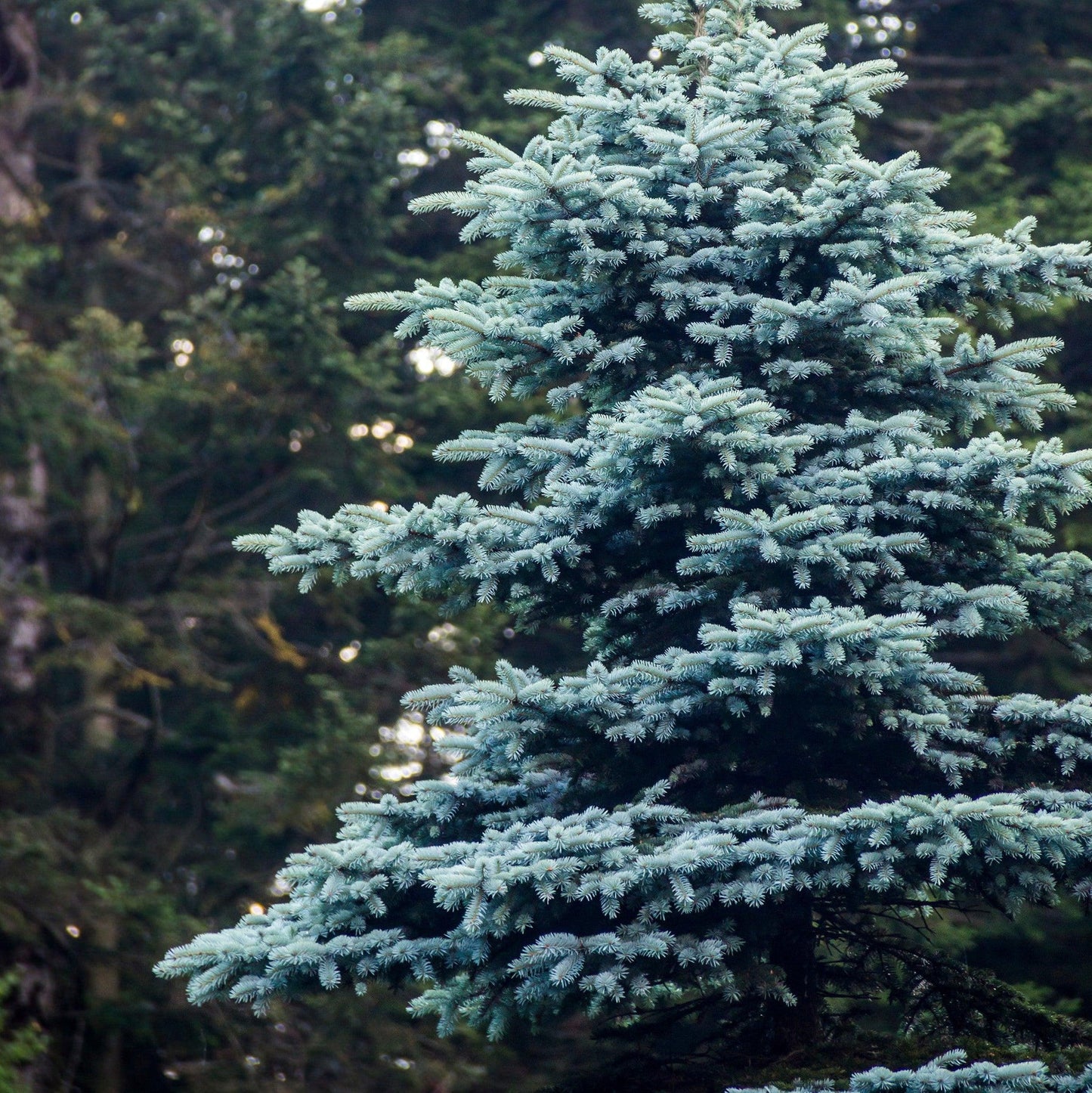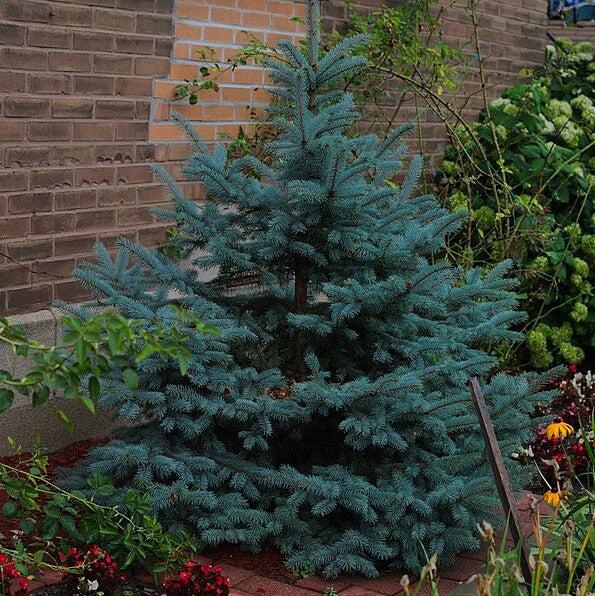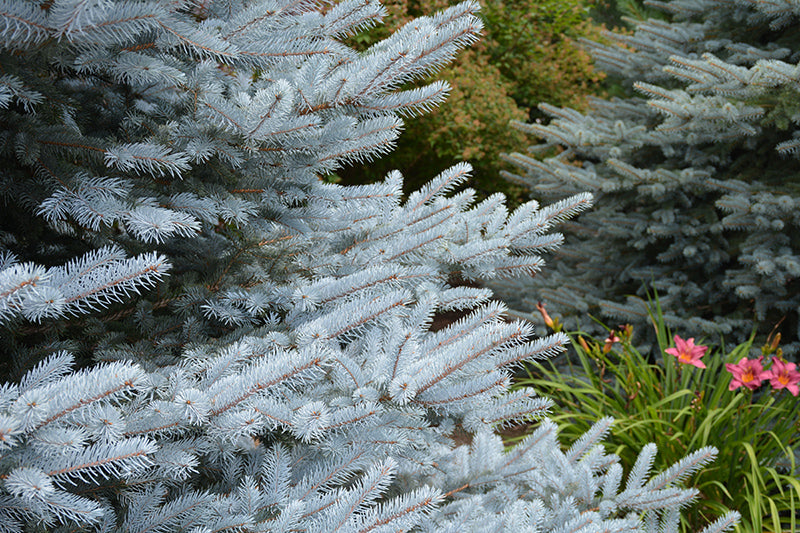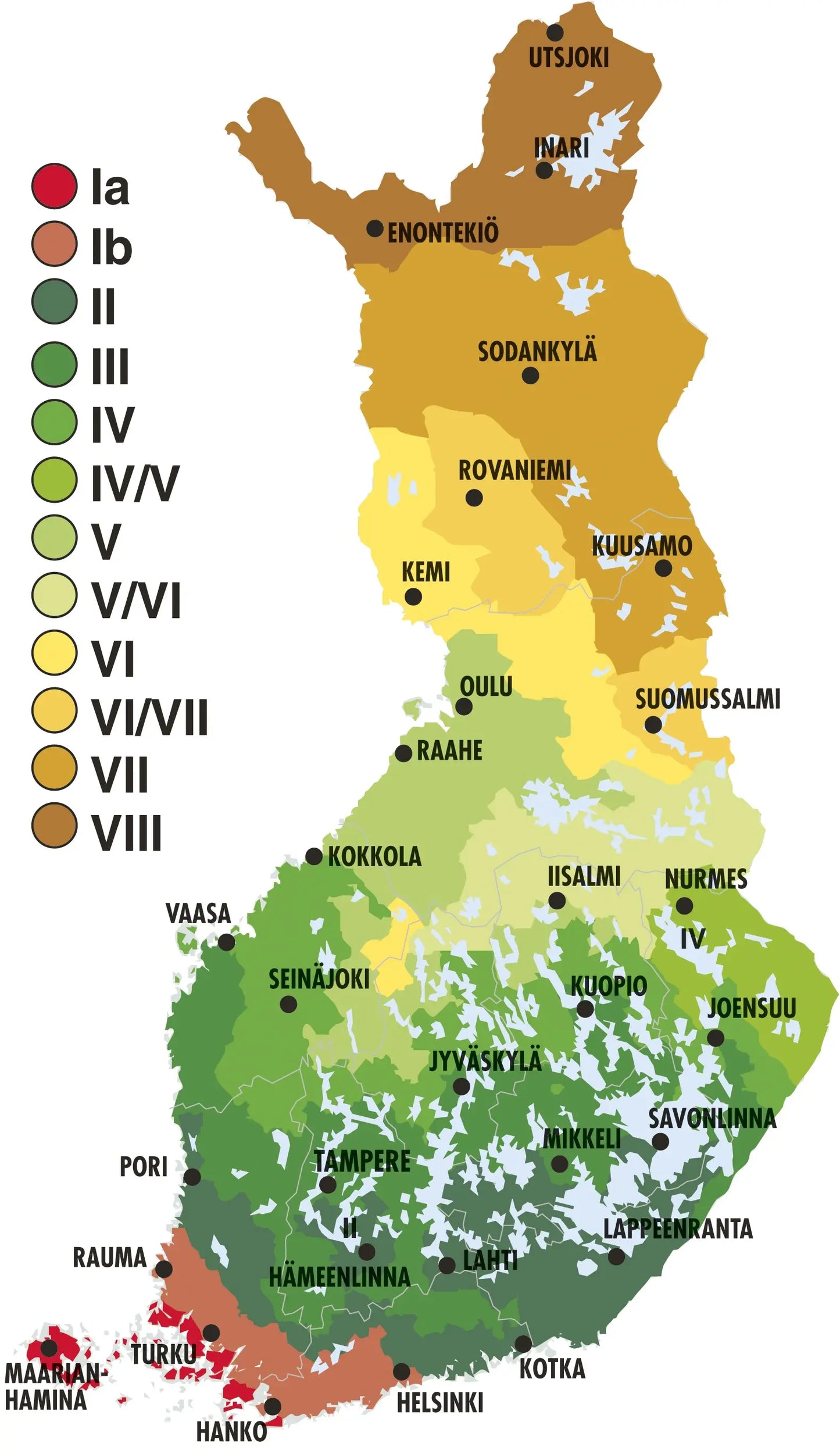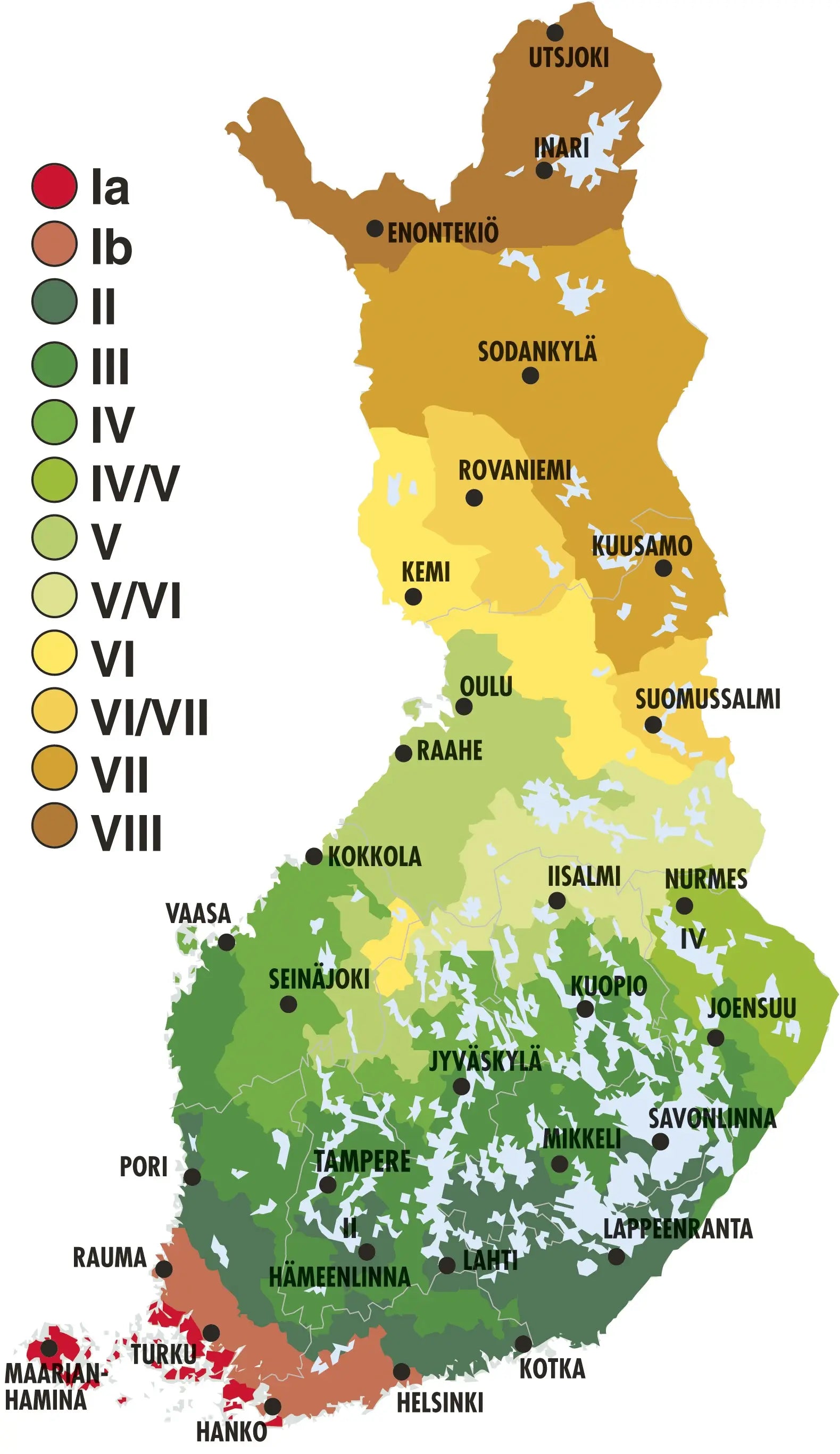Erikoistaimet.fi
Picea pungens 'Foxtail' - Blue Spruce
Picea pungens 'Foxtail' - Blue Spruce
Couldn't load pickup availability




Picea pungens , commonly called Colorado spruce (also blue spruce), is a medium to large, narrow, pyramidal conifer that branches horizontally to the ground. It typically grows 70-120cm tall in cultivation. It is native to the Central Rocky Mountains from southern Montana and eastern Idaho south to New Mexico, where it typically grows in moist places at elevations of 6,000 to 11,000 feet. Stiff, bristly, quadrangular, green-blue-green to silver-blue needles (up to 4 cm) point outward from the branches in all directions. The cylindrical light brown cones (up to 10 cm long) have flexible scales. Dark gray bark on old trees. From a horticultural perspective, blue or silver-blue seedlings are generally more desirable than green ones.
The genus name is said to be derived from the Latin word pix , meaning "pitch", referring to the sticky resin typically found in spruce bark.
The specific epithet means pointed in relation to needles.
'Foxtail' is known for the foxtail appearance of its new branches (needles at the tips of the branches are shorter than those at the base). This is a medium-sized, dense, wide upright, pyramidal, evergreen conifer with horizontal branching. It has a moderate growth rate, 30cm per year, and typically grows 70-120cm tall when cultivated. It has attractive blue-green needles and oval, elongated cones with wavy scales. Synonym for P. pungens 'Iseli Foxtail'.
Planting and growing
Iseli Foxtail Spruce grows to about 15 meters tall and 6 meters wide when mature. It grows slowly and under ideal conditions can be expected to live 60 years or more.
This tree should only be grown in full sunlight. It adapts well to both dry and wet growing conditions, but does not tolerate standing water. It is considered drought tolerant, making it an ideal choice for a conservatory or a moisture-conserving landscape. It is not specific to soil type or pH and can handle environmental salt. It tolerates urban pollution very well and thrives even in inner city environments. This is a selection of native North American species.
Ice
